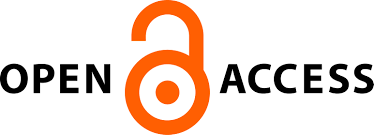The Application of Developmentally Appropriate Practice Learning Strategies to Improve Students' Arabic Learning Outcomes
Keywords:
Developmentally Appropriate Practice (DAP), Index Card Match, MufradātAbstract
This study aims to evaluate the effect of using Developmentally Appropriate Practice (DAP) learning strategies with Index Card Match media on student learning outcomes in mufradāt material in class VIII-B MTs. This research is a classroom action research. In this study, 31 class VIII-B students of MTs Ar-Rasyidiyah were divided into five groups. Learning outcomes data is measured using multiple-choice tests and descriptions that are relevant to the mufradāt material. Data analysis using the t-test showed that students who used the DAP learning strategy with Index Card Match media experienced a significant increase in learning outcomes compared to conventional methods. This study concluded that the application of the DAP learning strategy with Index Card Match media could improve student learning outcomes on mufradāt material in class VIII-B MTs Ar-Rasyidiyah, with the acquisition of an average score on the pretest of 66 and an average score on the post-test of 99. Follow-up studies can involve larger samples and different learning materials to generalize these findings further. This research provides valuable insights into effective teaching strategies and highlights the importance of incorporating appropriate media to enhance student learning outcomes.
References
Ali Mufti. (2022). Project-Based Learning untuk Meningkatkan Kemampuan Berpikir Tingkat Tinggi pada Mata Pelajaran Bahasa Arab. Al-Ma‘rifah, 19(1), 13–22. https://doi.org/10.21009/almakrifah.19.01.02
Azizah, H., & Irsyadi, F. Y. (2020). Educational Game in Learning Arabic Language for Modern Islamic Boarding School. Jurnal RESTI (Rekayasa Sistem Dan Teknologi Informasi), 4(3), 489–496. https://doi.org/10.29207/resti.v4i3.1894
Boukthir, K., Qahtani, A. M., Almutiry, O., Dhahri, H., & Alimi, A. M. (2022). Reduced Annotation Based on Deep Active Learning for Arabic Text Detection in Natural Scene Images. Pattern Recognition Letters.
Brown, C. P., Feger, B. S., & Mowry, B. (2015). Helping others understand academic rigor in teachers' developmentally appropriate practices. Young Children, 70(4), 62–69.
Caldana, A. C. F., Eustachio, J. H. P. P., Lespinasse Sampaio, B., Gianotto, M. L., Talarico, A. C., & Batalhão, A. C. D. S. (2023). A Hybrid Approach to Sustainable Development Competencies: The Role of Formal, Informal and Non-Formal Learning Experiences. International Journal of Sustainability in Higher Education, 24(2), 235–258. https://doi.org/10.1108/IJSHE-10-2020-0420
Cunningham, D. D. (2014). Re-Conceptualizing Early Childhood Teacher Education: Enacting a Paradigm Shift to Bring Developmentally Appropriate Practice to Higher Education. Critical Questions in Education, 5(1), 52–63.
Darling-Hammond, L., Flook, L., Cook-Harvey, C., Barron, B., & Osher, D. (2020). Implications for educational practice of the science of learning and development. Applied Developmental Science, 24(2), 97–140.
Djuraevna, T. N. (2023). Language Education as A System: Structure, Functions and Main Components. Periodica Journal of Modern Philosophy, Social Sciences and Humanities, 14, 141–146.
Hanun, A. (2019). Ilqo’; Strategi Peningkatan Keterampilan Berbicara Di Pondok Pesantren Salafiyah Syafi’iyah. Studi Arab, 9(2), 237–248. https://doi.org/10.35891/sa.v9i2.1303
Jauharotun, J. (2024). Analisis Kesalahan Sintaksis (Gramatikal) dalam Pembelajaran Ilmu Nahwu Kelas VIII MTs Attanwir Bojonegoro. Al-Akhbar: Jurnal Pendidikan Bahasa Arab, 2(1), 95–108. Retrieved from https://e-jurnal.staiattanwir.ac.id/index.php/jpba/article/view/310
Khasanah, N. (2018). Desain Pengembangan Kurikulum Pembelajaran Bahasa Arab Berbasis Pendekatan Potensi/Fitrah. Al Mahāra: Jurnal Pendidikan Bahasa Arab, 4(2), 159–180. https://doi.org/10.14421/almahara.2018.042-01
Meschke, L. L., Peter, C. R., & Bartholomae, S. (2012). Developmentally appropriate practice to promote healthy adolescent development: Integrating research and practice. Child & Youth Care Forum, 41, 89–108.
Mitrajati, K., Zaini, H., & Holilulloh, A. (2023). Acquisition of Arabic Vocabulary Through the Book Al-‘Arabiyyah Baina Yadaik (I) in Foreign Language Course Institutions. Scaffolding: Jurnal Pendidikan Islam Dan Multikulturalisme, 5(2), 1001–1014. https://doi.org/10.37680/scaffolding.v5i2.3407
Mofid, M. (2019). Strategi Pembelajaran Aktif Learning Dalam Pembelajaran Bahasa Arab di Pondok Pesantren Darul Lughah Waddirasatil Islamiyah (DALWI) Pamekasan. Studi Arab, 10(2), 173–188.
Nadziroh, F. (2017). Analisa Efektifitas Sistem Pembelajaran Berbasis E-learning. Journal of Computer Science and Visual Communication Design, 2(1), 1–14. https://journal.unusida.ac.id/index.php/jik/article/view/28
Nurcholis, A., & Salaeh, B. (2019). Epistimologi Kurikulum Bahasa Arab di Sekolah Menengah Mutawasitah Piraya Nawin Klonghin Wittaya Patani Thailand Selatan. Arabi : Journal of Arabic Studies, 4(1), 75–86. https://doi.org/10.24865/ajas.v4i1.124
Permana, I., Rohanda, R., & Ruhendi, A. (2023). Ansyithah Al-Thalabah fī Istī’āb Al-Mufradāt wa Al-Muhādlarah wa ‘Alāqatuhā Biqudratihim ‘Alā Al-Muhādatsah Al-‘Arabiyyah. Tadris Al-’Arabiyyah: Jurnal Pendidikan Bahasa Arab Dan Kebahasaaraban, 2(1), 53–65. https://doi.org/10.15575/ta.v2i1.24402
Peters, E., Noreillie, A., Heylen, K., Bulté, B., & Desmet, P. (2019). The Impact of Instruction and Out‐of‐School Exposure to Foreign Language Input on Learners' Vocabulary Knowledge in Two Languages. Language Learning, 69(3), 747–782. https://doi.org/10.1111/lang.12351
Rohayati, D. (2018). Analisis Strategi Pembelajaran Bahasa dalam Pembelajaran Bahasa Inggris sebagai Bahasa Asing. Mimbar Agribisnis: Jurnal Pemikiran Masyarakat Ilmiah Berwawasan Agribisnis, 1(3), 269–280. https://doi.org/10.25157/ma.v1i3.47
Samin, S. M., Yunita, Y., & Akzam, I. (2021). Strategi Peningkatan Kemandirian Belajar Mahasiswa Pendidikan Bahasa Arab di Era Revolusi Industri 4.0. Perspektif Pendidikan Dan Keguruan, 12(2), 113–120. https://doi.org/10.25299/perspektif.2021.vol12(2).7868
Sanders, K., & Farago, F. (2018). Developmentally appropriate practice in the twenty-first century. International Handbook of Early Childhood Education, 1379–1400.
Siswanto, N. D. (2022). Active Arabic Learning Strategies In Improving Language Skills. Tadris Al-’Arabiyyah: Jurnal Pendidikan Bahasa Arab Dan Kebahasaaraban, 1(1), 28–42. https://doi.org/10.15575/ta.v1i1.17295
Sutopo, L., & Wibowo, M. A. (2018). Penerapan Model Cooperative Learning Tipe Stad Untuk Meningkatkan Aktivitas Dan Hasil Belajar Bahasa Arab Siswa Kelas XI IPS-2 SMA Muhammadiyah 1 Kalirejo Lampung Tengah Tahun 2011. An Naba: Jurnal Pemikiran Dan Penelitian Pendidikan Islam, 1(1), 1–13. https://doi.org/10.2512/annaba.v1i1.4
Vengopal, K. (2015). Blooming flowers: A case for developmentally appropriate practice. Journal of Early Childhood Research, 13(2), 126–136.
Walsh, G., Sproule, L., McGuinness, C., Trew, K., & Ingram, G. (2010). Developmentally appropriate practice and play-based pedagogy in early years education. Retrieved December, 18, 2016.
Wulandari, R. (2021). Characteristics and Learning Models of the 21st Century. Social, Humanities, and Educational Studies (SHEs): Conference Series, 4(3), 8–16. https://doi.org/10.20961/shes.v4i3.49958
Downloads
Published
Issue
Section
License
Copyright (c) 2024 Ade Arip Ardiansyah, Nanang Kosim, Aini Deo Rahmi Sudiana, Aziz Firmansyah, Abdelhak Belabed (Author)

This work is licensed under a Creative Commons Attribution-NonCommercial-ShareAlike 4.0 International License.







